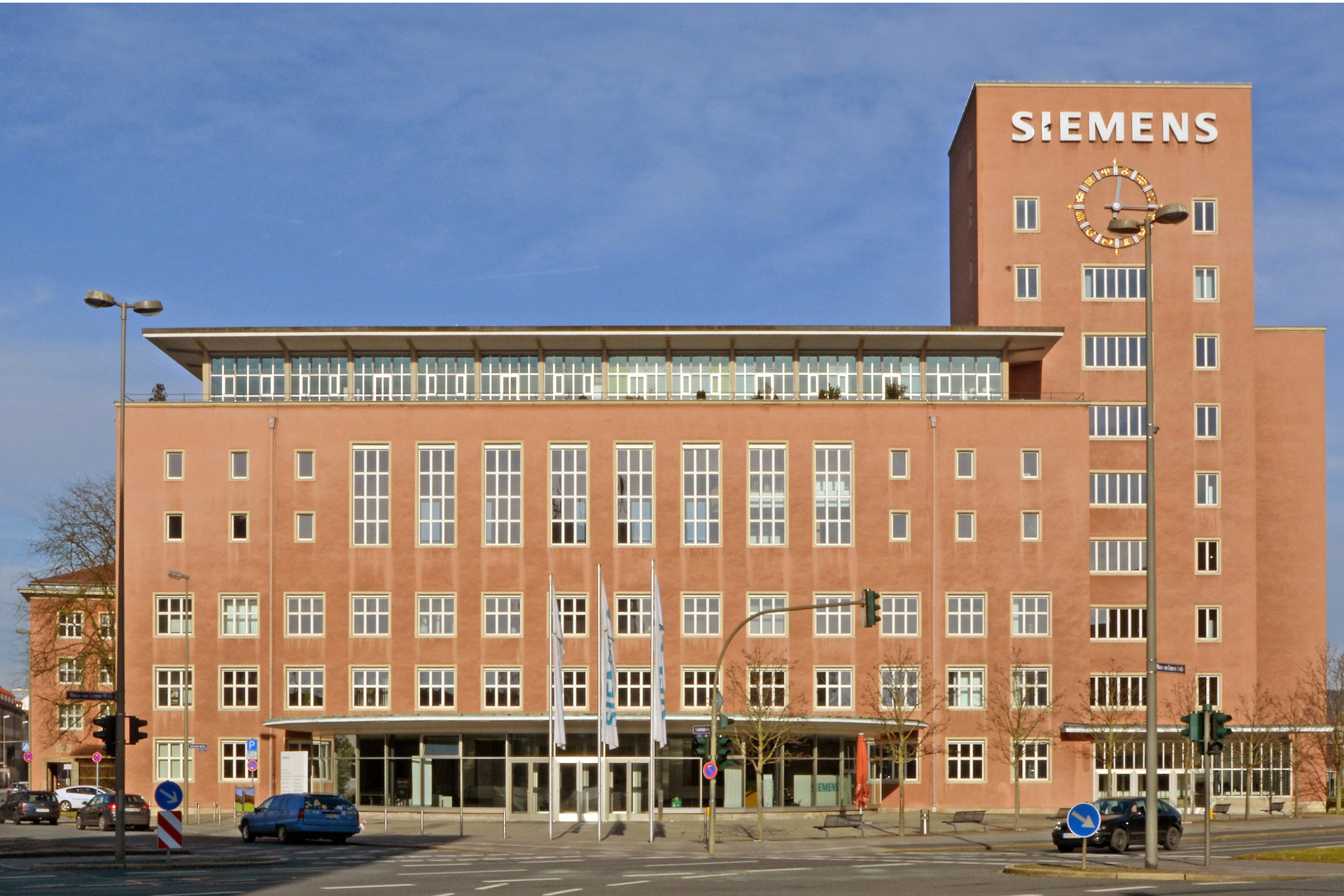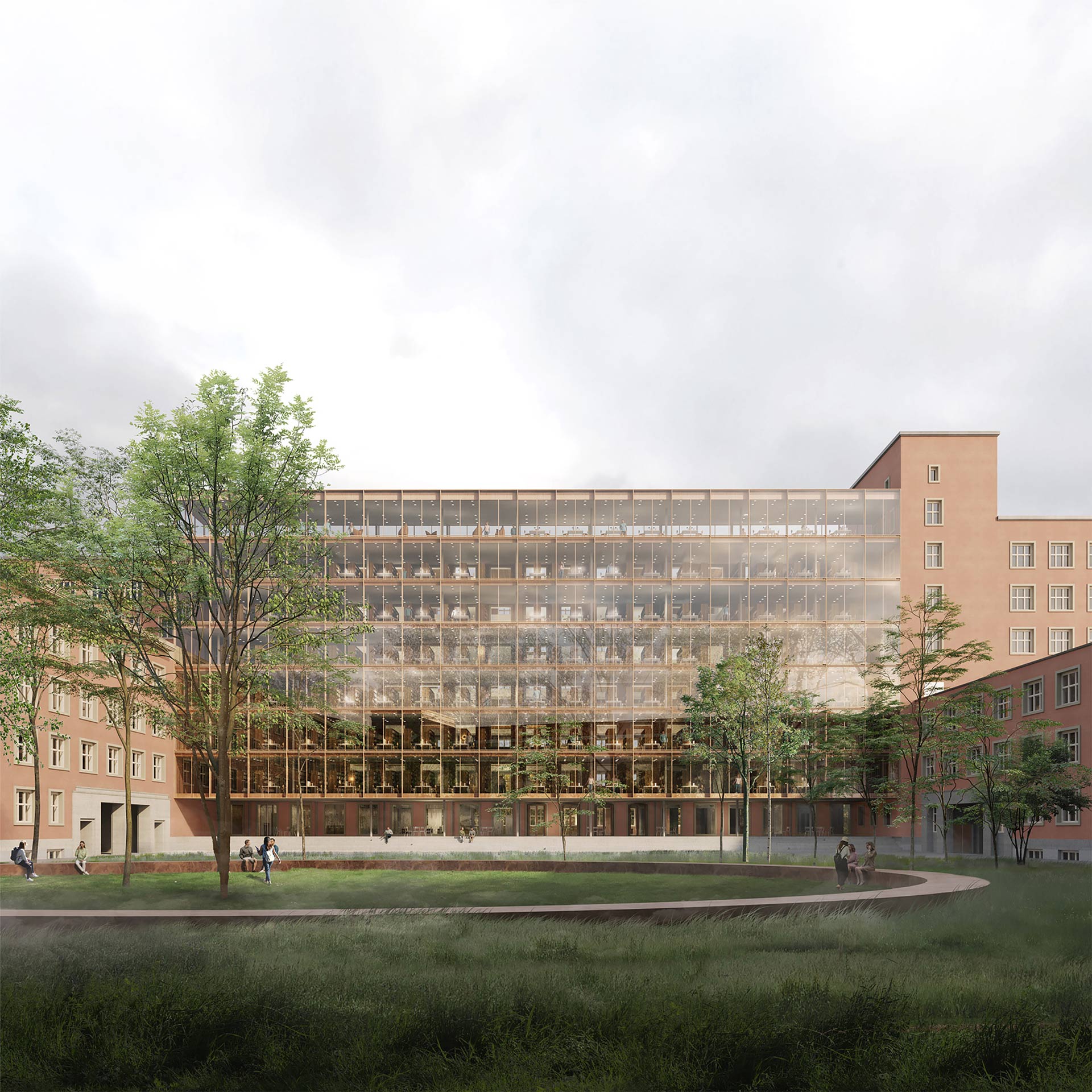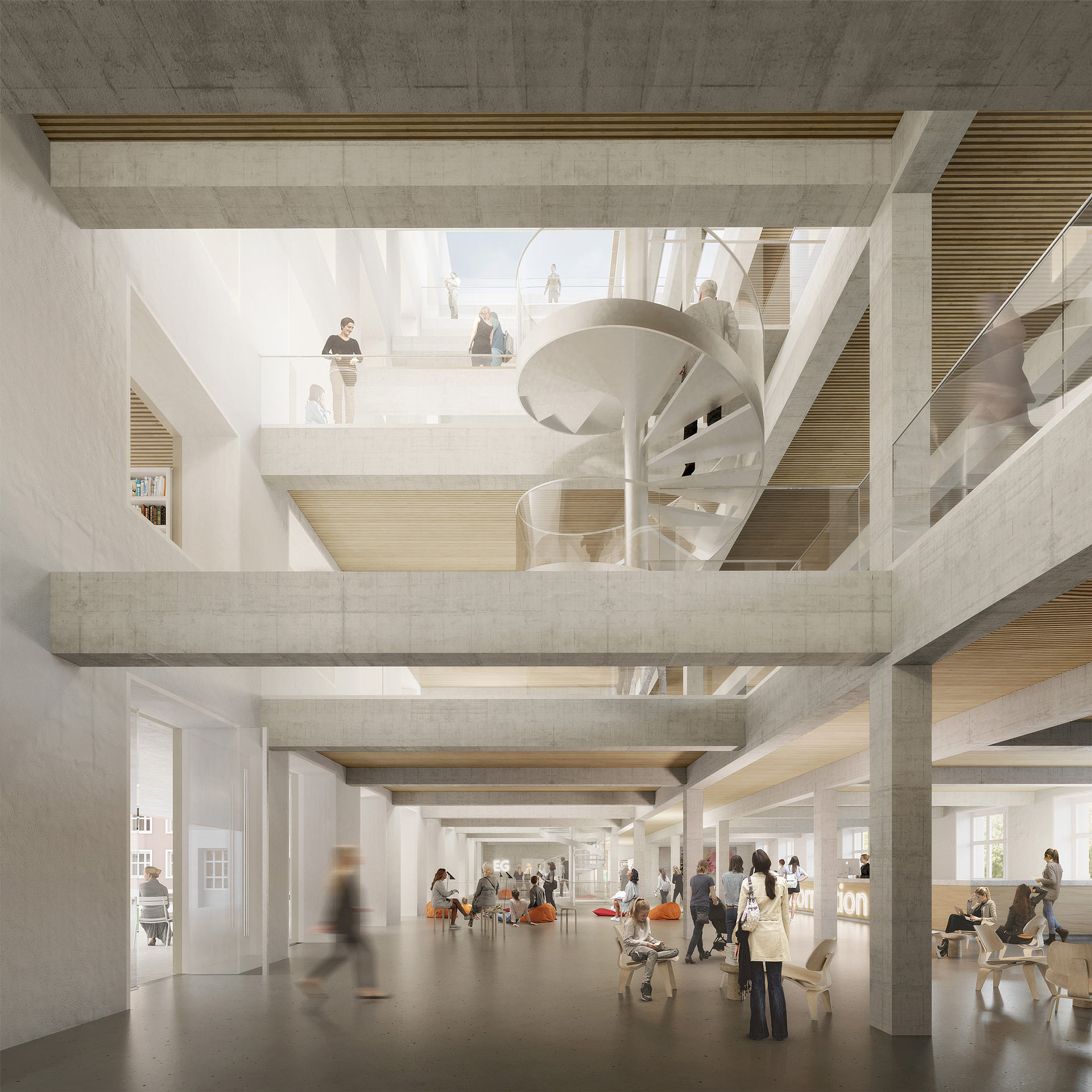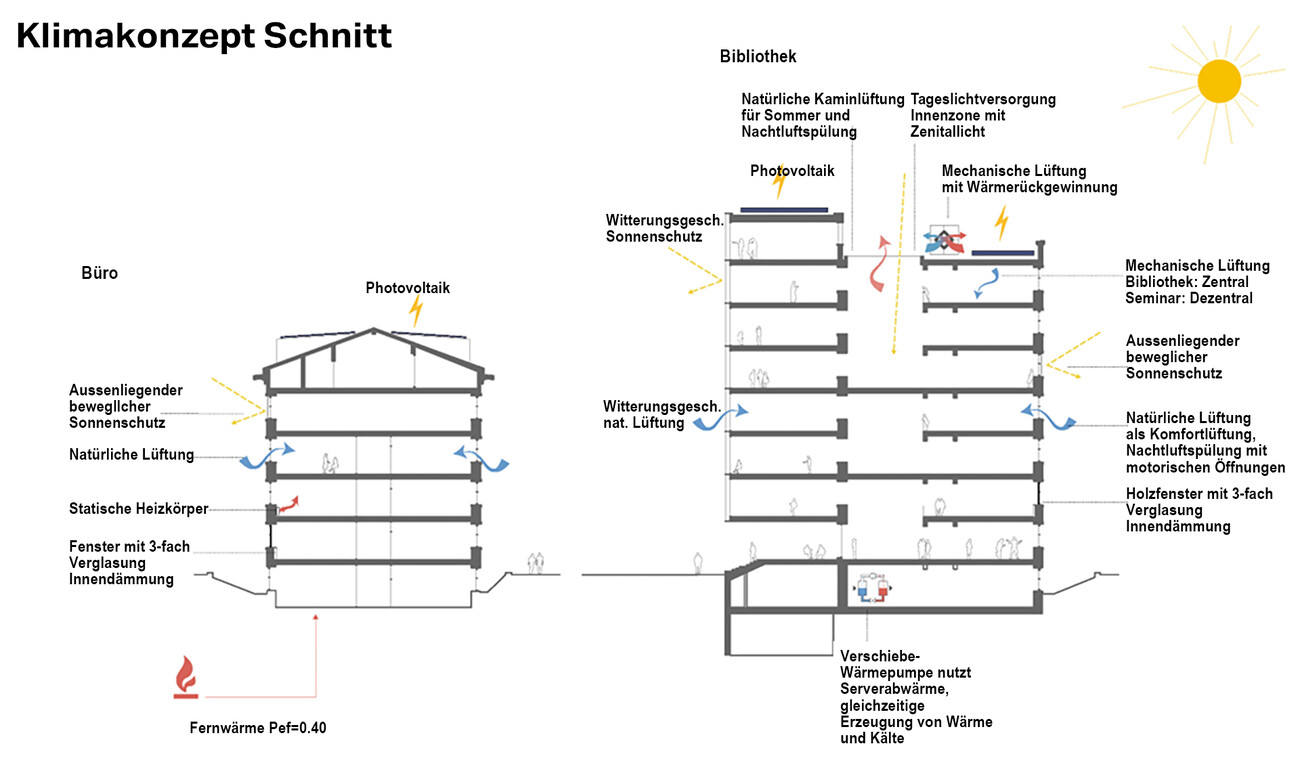Renovation 'Himbeerpalast', Erlangen, Germany

After World War II, Siemens moved its headquarters from Berlin to Erlangen. Siemens' chief architect, Hans Hertlein, realized a large complex made of rubble bricks with reddish plaster from 1948 to 1953, earning it the nickname "Raspberry Palace." Now owned by the Free State of Bavaria, this listed building will serve as a humanities center for the Friedrich-Alexander University (FAU). Transsolar took on the task of the energy concept, focusing on energy savings, efficiency increases, and the use of renewable energies.
The new library will be adjacent to the existing structure, opening onto the courtyard. Thus, the large courtyard remains undeveloped and becomes a garden, accessible through passages in the north and south. Some ceilings of the existing structure will be removed, and new stairs will connect the eight floors of the "stacked" library. Formerly stacked Siemens offices will transform into new flowing spaces.
Decentralized units will provide fresh air to the seminar rooms, which can also actively precool. The amount of fresh air will adjust energy-efficiently to current occupancy, determined by measured air quality. The library will have mechanical ventilation, with the central system featuring highly efficient heat recovery. Fresh air can be cooled without needing refrigeration through adiabatic humidification of exhaust air. The offices for lecturers will have purely natural ventilation, with night ventilation and enhanced comfort in summer through ceiling fans.
Facing west, the new double façade construction will have sun protection in the facade corridor shielded from the wind. This façade allows for excellent natural ventilation, both during the day and for nighttime air flushing, thanks to openings in the floor slabs connecting all library levels and additional operable skylights. The optimized solution, minimizing pressure losses, was developed with CFD simulations in collaboration with the façade planner.
As a compromise was necessary between preservation and a high share of renewable energy, photovoltaics on the roof partially cover the power needs. A proposed geothermal system could not be realized. In addition to connecting to Erlangen's district heating network, reversible heat pumps utilize waste heat from cooling server systems for simultaneous heating. The new building area will have underfloor heating, while the existing area will continue to use radiators.
The "Palace" will continue to be utilized, with its ecological footprint significantly smaller than that of a new building, as much of the embodied energy invested in the past is preserved. Transsolar conducted a life cycle assessment (LCA) for the entire renovation, calculating the CO2 emissions for the initial gutting phase (Phase C) and the renovation phase (Phase A). Material flows caused by the renovation were analyzed. In terms of carbon emissions, new windows pay off after about 15 years, and interior insulation after 3.5 years. Reuse of building components has been partially facilitated in the secondary market.


